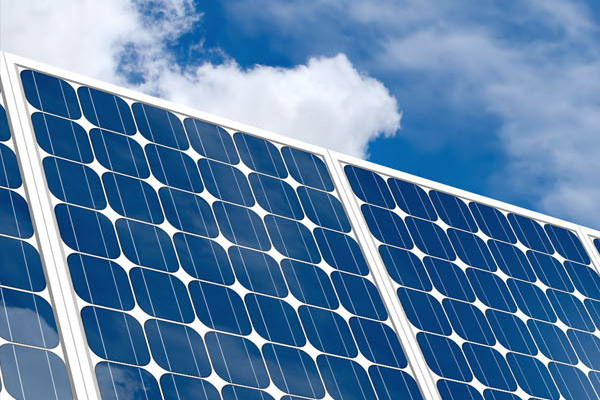Image: Absolute Solar & Wind.
New documents released by the Department for Business, Energy and Industrial Strategy (BEIS) have revealed that the government now thinks solar will be significantly cheaper to develop by 2020 than predicted three years ago.
This morning BEIS published its ‘Electricity Generation Cost Report’, which compiled various data sets from documents – including the now infamous Parsons Brinckerhoff report on small-scale solar used to inform last year’s feed-in tariff review, as well as responses to the consultation – to produce updated levelised cost of energy (LCOE) forecasts across various technologies.
“
“A ‘levelised cost’ is the average cost over the lifetime of the plant per MWh of electricity generated. It reflects the cost of building, operating and decommissioning a generic plant for each technology. Potential revenue streams are not considered.”
Today’s document reveals that the government expects large-scale solar PV to be developed in the UK at an LCOE of £67/MWh from 2020, representing a stark decrease on the cost forecasted just three years ago.
In 2013, the then-Department of Energy and Climate Change (DECC) expected deployment costs within the same time frame to stand at around £92/MWh, some 27% more expensive.
The majority (£52/MWh) is borne from the construction costs, with £6/MWh and £9/MWh attributed to pre-development costs and ongoing, fixed operations and maintenance costs throughout the project’s expected lifetime.
These costs continue to fall out to 2030, with BEIS now expecting solar’s LCOE to decrease to £63/MWh in 2025 and £60/MWh in 2030.
BEIS’ 2030 estimate is not only of an equivalent price to onshore wind and cheaper than combined cycle gas turbines, but also cheaper than the £64/MWh figure put forward by the Committee on Climate Change in its Fifth Carbon Budget proposals, albeit without any additional charges for its intermittent generation.
The government also broke down development figures for other scales of solar, particularly 1-5MW rooftop solar which is expected to be developed at £73/MWh by 2020, and sub-10kW rooftop – or residential – solar, which is expected to have a LCOE of £128/MWh by the same year, equivalent to 12.8p/kWh. With the average consumer paying electricity tariffs of around 10.5-11.5p/kWh, the document illustrates how close rooftop solar would be to being cost competitive by the turn of the decade.
Perhaps more interesting is BEIS’ LCOE estimate for 250kW-1MW rooftop solar of £109/MWh – equivalent to 10.9p/kWh – around about the same price corporate customers currently pay for their electricity outside of peak periods.
The document also illustrates how the government has historically underestimated the rate at which costs associated with solar development have fallen, but without a route to market deployment looks all but set to stagnate between now and then.
The government also confirmed this morning that solar and other established pot one technologies will be excluded from the second Contracts for Difference round and Paul Barwell, chief executive at the Solar Trade Association, stressed the importance of allowing solar to compete in such auctions.
“This is a timely update from BEIS who have provided projections of LCOE out to 2030. It reflects what we already know in that solar and onshore wind costs continue to fall, and at the large scale will be the cheapest new energy generating assets well before 2020.
“As low carbon technologies, it is now paramount that government allows these technologies to compete in the next CfD auctions – the cheapest technologies, even accounting for its variable generation, cannot be left out without risking higher costs to the end consumer,” he said.


